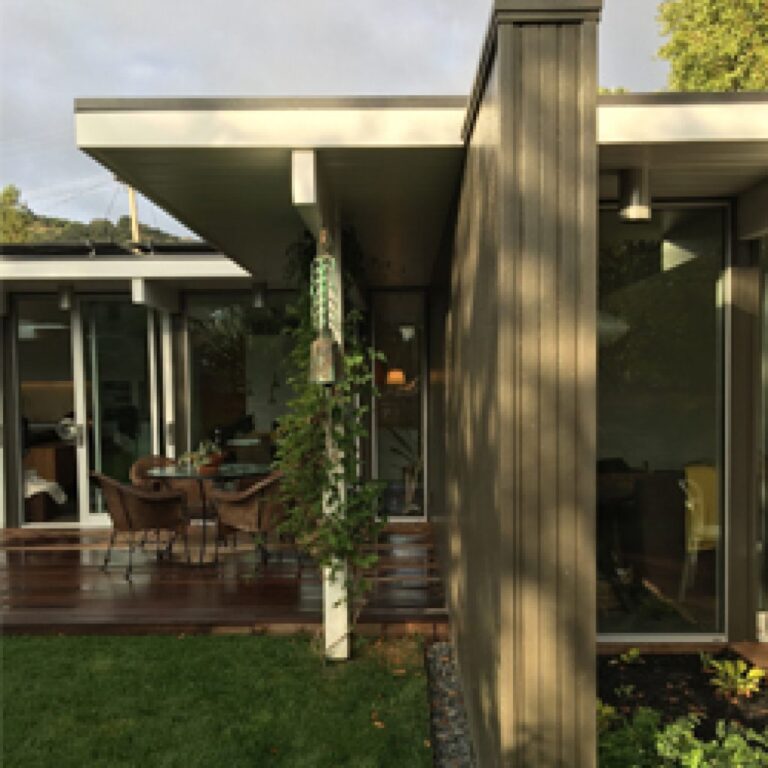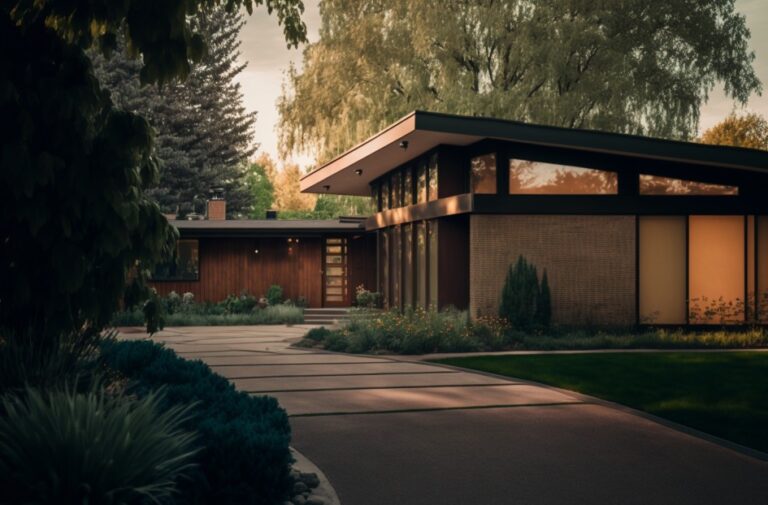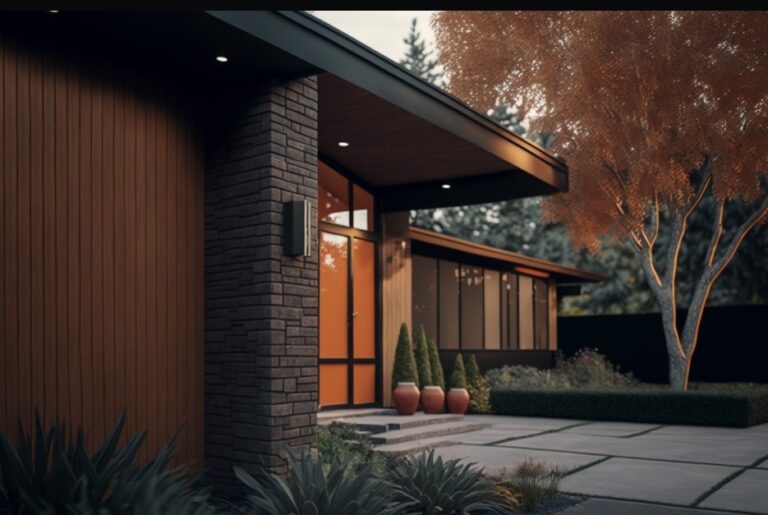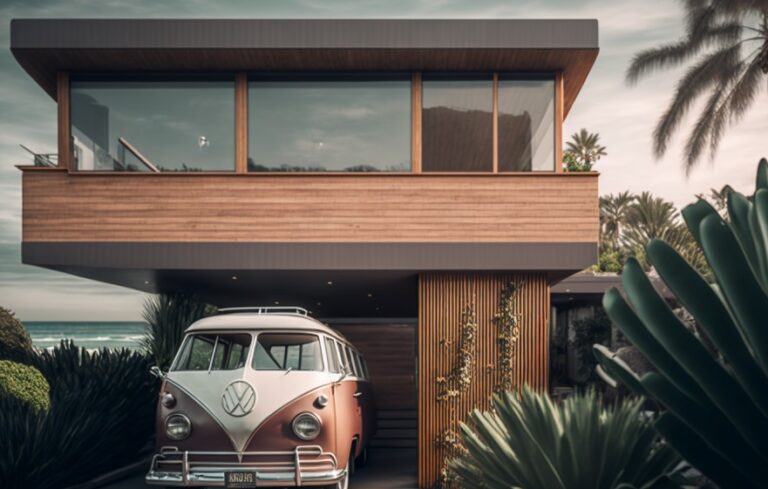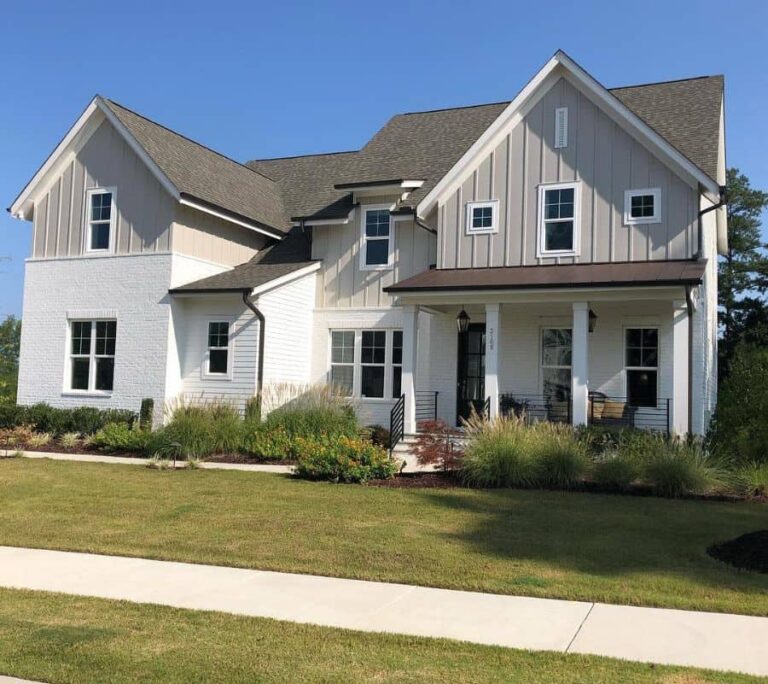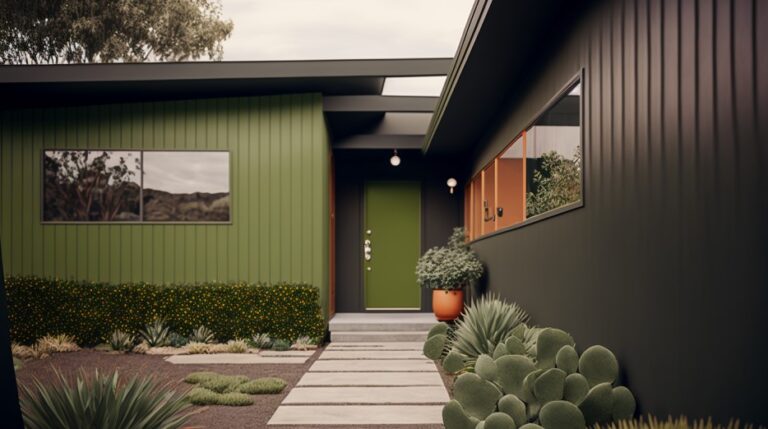Modern Metal Siding Options A Comprehensive Guide
Modern metal siding options offer a compelling blend of aesthetics and practicality. From the sleek lines of steel to the timeless elegance of copper, these materials provide durable, attractive exterior solutions. This guide explores various types of metal siding, delving into their design, installation, and cost considerations, as well as their impact on energy efficiency and sustainability. We’ll cover everything from choosing the right finish to understanding local building codes, equipping you with the knowledge to make informed decisions for your next project.
Introduction to Modern Metal Siding
Modern metal siding is a popular choice for homeowners seeking durable, aesthetically pleasing, and energy-efficient exterior cladding. Its versatility allows for a wide range of design options, from sleek contemporary styles to traditional rustic looks. The inherent strength and longevity of metal offer a substantial return on investment compared to other materials.
Metal siding provides a robust and long-lasting solution, significantly reducing the need for future repairs and replacements. Its resistance to weather elements, including rot, insects, and fire, makes it a reliable choice for various climates.
Metal Siding Materials
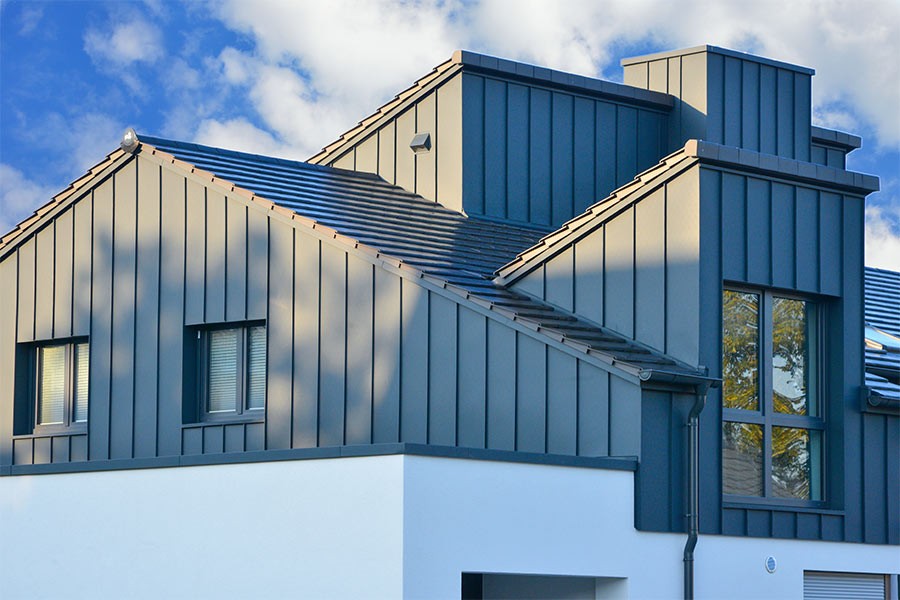
Modern metal siding encompasses a range of materials, each with unique properties and applications. Steel, aluminum, and copper are common choices, each offering distinct advantages and disadvantages.
Types of Metal Siding
- Steel Siding: Steel siding is a cost-effective and widely available option. Its strength and durability make it resistant to dents and impacts. Galvanized steel, a common type, is coated to prevent rusting, extending its lifespan. Pre-painted steel siding provides a variety of colors and finishes without the need for additional painting.
- Aluminum Siding: Aluminum siding is known for its lightweight nature, making installation easier. Its excellent resistance to corrosion makes it a good choice for coastal areas or regions with high humidity. Aluminum’s reflectivity can contribute to energy efficiency by reducing heat absorption. A wide array of colors and finishes are available, allowing for custom design choices.
- Copper Siding: Copper siding offers a distinct aesthetic appeal with its warm, natural tones and patina. While more expensive than other options, copper’s inherent durability and resistance to corrosion make it a long-term investment. Over time, copper develops a characteristic patina, which adds character and visual interest to the home’s exterior. The unique aesthetic quality and enduring longevity make it a desirable choice for many homeowners.
Finishes and Colors
A wide array of finishes and colors are available for metal siding, allowing for a diverse range of design possibilities. Pre-painted finishes come in various shades, from traditional earth tones to vibrant modern hues. Some metal siding options allow for custom color matching, offering even greater design flexibility. Textured finishes, such as embossed patterns, can add visual interest and depth to the siding.
Comparison of Metal Siding Types
| Siding Type | Pros | Cons | Cost |
|---|---|---|---|
| Steel | Cost-effective, durable, strong, readily available, and a wide variety of finishes | Can rust if not properly coated, may require additional painting depending on the finish | Generally mid-range |
| Aluminum | Lightweight, easy to install, excellent corrosion resistance, energy-efficient, diverse colors and finishes | Can be less strong than steel, may not be as visually appealing as copper | Mid-range to higher, depending on the finish and customization |
| Copper | Unique aesthetic appeal, exceptionally durable, high resistance to corrosion, long lifespan, develops beautiful patina over time | Higher initial cost, installation can be more complex, may require specialized tools | Generally the highest cost among the three |
Design and Aesthetics of Modern Metal Siding

Modern metal siding offers a diverse range of design possibilities, moving beyond the traditional industrial look to embrace a wide spectrum of architectural styles. Its versatility extends to various color choices, finishes, and textures, allowing homeowners to personalize their building’s exterior and achieve a truly unique aesthetic. The interplay of these elements can significantly impact the overall visual appeal and value of a property.
The selection of metal siding is increasingly influenced by aesthetic preferences, enabling architects and homeowners to create striking and contemporary facades. Careful consideration of color, finish, and pattern is crucial to achieving a cohesive and visually appealing design that complements the surrounding environment and enhances the property’s curb appeal.
Architectural Styles Utilizing Metal Siding
Modern metal siding seamlessly integrates with contemporary architectural styles, including minimalist, Scandinavian, and industrial designs. Its sleek, clean lines and ability to reflect light create a modern, sophisticated aesthetic. Examples include homes with large expanses of glass, geometrically shaped roofs, and open floor plans, where the siding acts as a sophisticated backdrop. The use of metal siding in these contexts creates a modern, minimalist feel.
Influence of Color Choices and Finishes
Color and finish are critical determinants in the overall look and feel of a building. Metal siding can be finished in a variety of ways, including painted, powder-coated, or natural metal finishes, influencing its visual characteristics. Light colors like white, beige, and gray reflect light, creating a bright and airy ambiance, while darker colors like black, deep blue, and forest green offer a dramatic and sophisticated contrast. The choice of finish directly impacts the material’s reflectivity and overall appearance.
Available Patterns and Textures, Modern Metal Siding Options
Metal siding is available in a variety of patterns and textures. Standard smooth surfaces offer a clean, contemporary look. Alternatively, textured metal siding, such as corrugated or ribbed patterns, adds visual interest and depth to the facade. These textures can range from subtle ripples to pronounced ridges, allowing for greater design expression. Choosing the right texture enhances the building’s visual appeal and creates a distinct architectural statement.
Color Palette Examples for Modern Metal Siding
| Color Palette | Description | Examples | Visual Impact |
|---|---|---|---|
| Neutral Tones | A palette featuring a combination of light and medium greys, beiges, and whites creates a calming and sophisticated look. | Gray-toned siding on a home with white trim, beige siding on a house with light gray accents. | Creates a modern, minimalist aesthetic. Offers a clean, unobtrusive backdrop. |
| Bold Colors | A palette that uses vibrant hues like deep blues, emerald greens, and rich terracotta creates a statement piece. | Deep blue metal siding on a contemporary home, or a house with forest green siding and black trim? | Makes a strong visual statement. Offers a dramatic contrast to the surroundings. |
| Earthy Tones | A palette that incorporates muted browns, tans, and greens evokes a connection with nature. | A home with copper-toned siding or a building with bronze-colored metal siding offers a natural and warm aesthetic. | Creates a harmonious blend with the natural landscape. Offers a warm and inviting feel. |
Installation and Maintenance of Modern Metal Siding: Modern Metal Siding Options
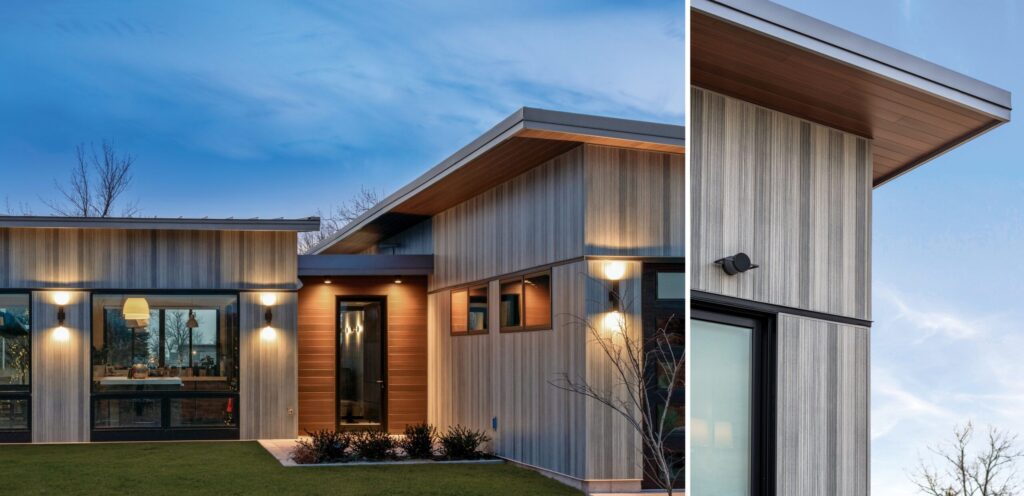
Modern metal siding, with its diverse styles and durability, requires a meticulous installation process and ongoing maintenance to ensure its longevity and aesthetic appeal. Proper installation and consistent upkeep are crucial for maximizing the lifespan and value of your home’s metal siding.
The installation of metal siding involves a sequence of steps that, when followed correctly, guarantee a strong and enduring finish. Careful consideration of factors like the building’s structure, the chosen siding material, and the local climate is paramount.
Installation Process
The installation process typically begins with meticulous preparation of the existing wall structure. This involves ensuring the surface is clean, dry, and free of debris. After this initial preparation, the metal panels are attached using appropriate fasteners, ensuring the proper spacing and alignment to maintain the aesthetic appeal of the siding. Professional installers often employ specialized tools and techniques to guarantee a seamless finish and secure installation.
Tools and Materials
A comprehensive list of tools and materials is necessary for a successful installation. This includes, but is not limited to, specialized metal-working tools, fasteners, sealants, and appropriate safety equipment. The specific tools and materials required depend on the type of metal siding being installed. For example, using the correct screws and fasteners tailored to the metal’s gauge and the wall’s composition is crucial. Proper safety equipment, such as eye protection and work gloves, is also essential to avoid injury.
Sealing and Securing
Proper sealing and securing are vital for preventing water damage and ensuring the long-term integrity of the metal siding. Sealants are applied at seams and around fasteners to create a watertight barrier. This step is critical in preventing moisture from penetrating the siding and causing rust or rot. Using high-quality sealants specifically designed for metal siding is crucial. Fasteners should be appropriately sized and spaced to ensure they effectively secure the siding to the wall structure without compromising the siding’s integrity. A qualified installer will have experience in determining the correct fastener types and placement.
Maintenance Procedures
Regular maintenance is key to preserving the aesthetic appeal and structural integrity of metal siding.
Cleaning
Cleaning modern metal siding can be achieved using a soft-bristled brush, a garden hose, and a mild detergent solution. Avoid using harsh chemicals or abrasive materials, which can damage the metal’s finish. For stubborn stains, a specialized metal cleaner can be used, but always follow the manufacturer’s instructions. Regular cleaning helps to maintain the siding’s pristine look and prevents the buildup of elements that can cause premature corrosion.
Repair Procedures
Metal siding, like any other exterior material, may require repairs over time. Damaged or loose panels should be replaced or secured using appropriate fasteners and sealants. Any signs of rust or corrosion should be addressed promptly. This includes removing the damaged section, cleaning the affected area, and installing a replacement section using the correct materials and techniques. Proper repair procedures are essential to prevent further damage and maintain the integrity of the entire siding system.
Cost and Budget Considerations
Modern metal siding, while offering significant aesthetic and performance advantages, comes with a price tag. Understanding the factors that influence the cost is crucial for budgeting and making informed decisions. This section details the average installation costs, discusses the factors that impact pricing, and provides a comparative cost analysis for different metal siding types.
Accurate cost estimations are essential for any home improvement project. Precise cost breakdowns for metal siding help homeowners plan and allocate resources effectively.
Average Installation Costs
The average cost of installing modern metal siding varies significantly depending on several key factors. Installation costs typically range from $5 to $15 per square foot, encompassing both materials and labor. It’s important to remember that this is a broad estimate; actual costs will fluctuate based on specific project details.
Factors Affecting Cost
Several variables influence the final cost of modern metal siding.
- Material Type: Different metal types, such as steel, aluminum, or copper, have varying material costs. Higher-grade materials and specialized finishes (e.g., pre-painted, textured) will invariably lead to a higher price. The inherent durability and resistance to corrosion of certain metals can justify a higher initial cost. For example, copper siding, though visually appealing, often commands a premium due to its higher production costs.
- Size of the Project: Larger projects naturally require more materials and labor, leading to higher overall costs. The square footage of the area to be sided, the complexity of the roofline, and any necessary specialized work (like around windows or chimneys) all affect the total labor hours and materials required. A modest home addition, for instance, will likely have a different cost per square foot than a complete siding replacement on a large commercial building.
- Location: Geographic location plays a role. Labor costs, material availability, and transportation fees can vary considerably across regions. Areas with higher construction costs, such as urban centers or coastal regions, often have higher metal siding installation rates. For instance, a project in a remote area might face higher costs due to transportation expenses, while a project in a densely populated urban area might have lower material costs but higher labor costs.
- Installation Complexity: The complexity of the installation process also influences the final cost. A simple, flat roof might be less expensive to side than a complex, multi-level structure. This includes the need for specialized techniques, such as those required for curved surfaces or difficult-to-access areas.
- Labor Costs: Skilled labor is essential for proper installation. The experience and qualifications of the installers directly affect the labor costs. A reputable, insured, and highly experienced crew will likely have a higher hourly rate than a less experienced contractor.
Comparative Cost Analysis
| Siding Type | Estimated Cost (per sq ft) | Labor Costs (per sq ft) | Total Estimated Cost |
|---|---|---|---|
| Steel | $4 – $8 | $2 – $4 | $6 – $12 |
| Aluminum | $5 – $9 | $2 – $4 | $7 – $13 |
| Copper | $10 – $15 | $2 – $4 | $12 – $19 |
Note: These are estimates and actual costs may vary. Always obtain detailed quotes from multiple contractors before making a final decision.
Energy Efficiency and Sustainability
Modern metal siding offers compelling advantages beyond its aesthetic appeal. Its inherent properties contribute significantly to energy efficiency and sustainability, making it a desirable choice for environmentally conscious homeowners. This section explores how various metal siding types influence energy savings and the environmental footprint of this building material.
Modern metal siding’s impact on energy efficiency is multi-faceted. The material’s inherent properties, combined with proper installation techniques, can reduce energy consumption for heating and cooling. This translates into tangible cost savings for homeowners and a reduced carbon footprint.
Insulation and Energy Savings
Metal siding, while not an insulator itself, plays a critical role in a building’s overall thermal performance when used in conjunction with appropriate insulation strategies. The high thermal conductivity of metal, when properly managed, can contribute to consistent temperatures throughout the structure. The reflective properties of some metal finishes, such as aluminum, can help minimize solar heat gain in the summer and retain heat in the winter. This contributes to a more comfortable indoor environment and lower energy bills. Proper insulation behind the metal siding is paramount for optimizing energy efficiency.
Different metal siding types exhibit varying degrees of thermal performance. Steel siding, for example, is generally more effective at reflecting heat than aluminum, while copper’s thermal properties can contribute to a more even temperature distribution. Consideration should be given to the specific type of metal, its finish, and the building’s location and climate when choosing metal siding for energy efficiency.
Environmental Impact of Production and Disposal
The environmental impact of metal siding is a complex issue, encompassing the production process and the end-of-life management. The manufacturing of metal siding, like any industrial process, requires energy and resources. However, recycled metal is often used in the production process, minimizing the demand for raw materials and reducing the carbon footprint. The life cycle assessment of metal siding considers the entire production process, from raw material extraction to disposal.
| Metal Type | Recyclability | Production Energy Consumption | End-of-Life Management |
|---|---|---|---|
| Steel | High | Moderate | Recyclable, often with high recovery rates |
| Aluminum | High | High | Recyclable with minimal loss in quality |
| Copper | High | Moderate to High | Highly recyclable and reusable |
The recyclability of metal siding is a significant factor in its environmental impact. The majority of metal siding types are readily recyclable, allowing for a closed-loop system that minimizes waste and conserves resources. This contrasts with traditional siding materials like wood, which often end up in landfills. Proper end-of-life management practices are crucial to maximizing recycling rates and minimizing environmental harm. The availability of recycling programs and the infrastructure for handling metal siding waste vary by region.
Case Studies and Examples
Numerous construction projects demonstrate the energy efficiency benefits of metal siding. For instance, a recent residential project in a temperate climate utilized steel siding with a reflective coating, achieving significant energy savings in both heating and cooling. This case study highlights the potential of metal siding to contribute to sustainable building practices.
Modern Metal Siding and Building Codes
Modern metal siding, with its aesthetic appeal and durability, is becoming increasingly popular. However, its installation must adhere to specific building codes and regulations to ensure safety, structural integrity, and compliance with local ordinances. Understanding these codes is crucial for both homeowners and contractors to avoid costly delays and potential legal issues.
Relevant Building Codes and Regulations
Building codes are established to protect public safety and ensure the structural soundness of buildings. They encompass a wide range of considerations, including materials, installation methods, and safety protocols. Local jurisdictions often adopt and adapt national building codes, such as the International Building Code (IBC), to their specific needs and environmental conditions. These codes dictate minimum standards for metal siding installation, including attachment methods, flashing requirements, and drainage systems. Failure to comply with these codes can result in the rejection of the installation, costly rework, or even project delays.
Necessary Permits and Approvals
Obtaining necessary permits and approvals is a critical step in the metal siding installation process. The specific permits and approvals required vary depending on local building codes and regulations. These may include a building permit, a plumbing permit if there are drainage concerns, or a fire code inspection, depending on the jurisdiction. Homeowners should contact their local building department to determine the specific permits needed for their project. The building department will provide a detailed list of required documents and procedures, often outlining specific inspection requirements to ensure compliance.
Safety Considerations for Handling and Installing Metal Siding
Proper safety measures are paramount during the handling and installation of metal siding. Workers should always wear appropriate personal protective equipment (PPE), including safety glasses, gloves, and sturdy work boots. Metal siding can be heavy and sharp, so proper lifting techniques are crucial to prevent injuries. Moreover, the use of appropriate tools and equipment for cutting, bending, and attaching the siding is essential to prevent accidents. Work areas should be kept clear and organized to minimize tripping hazards. Fall protection measures are mandatory for installations on higher levels. Following these guidelines significantly reduces the risk of accidents and injuries during the installation process.
Summary
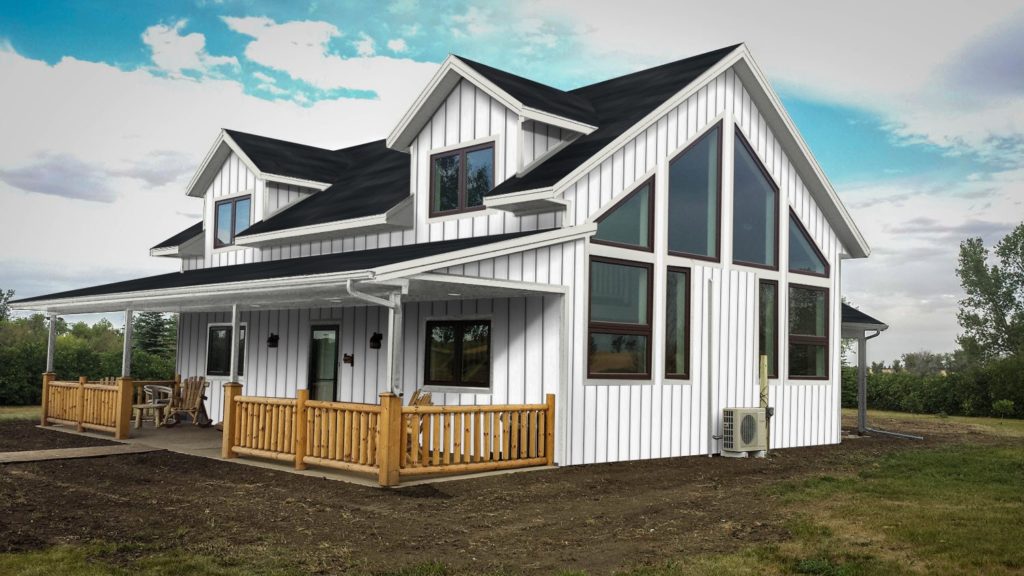
Source: trulogsiding.com
In conclusion, modern metal siding presents a multitude of attractive and durable choices for homeowners. This guide has highlighted the diverse options available, ranging from cost-effective steel to premium copper, each with its own set of advantages and disadvantages. By considering design aesthetics, installation procedures, and budget implications, you can confidently select the ideal metal siding to enhance your property’s value and appeal. Remember to factor in energy efficiency and sustainability, along with local building codes, when making your final decision.
